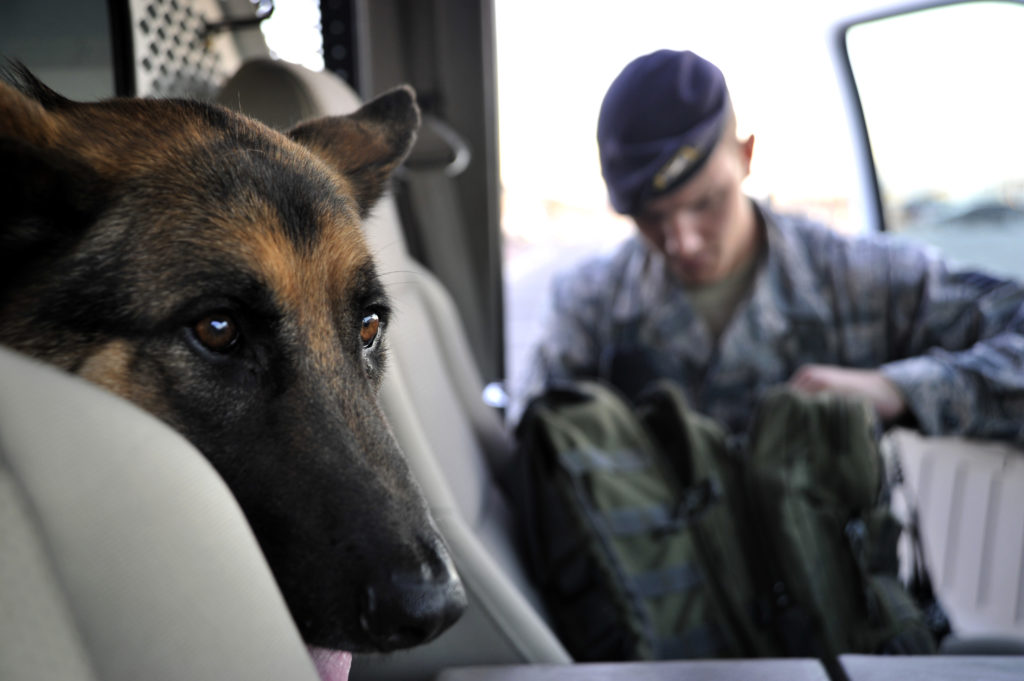With over half of all adults experiencing some trauma in their lifetime and almost 8% of the population experiencing PTSD, it is likely leaders will encounter the effects of the fight or flight hormone response (1).
In the last article, our new pup began to give us a glimpse of the triggering effect that can drastically change behavior. In this article, we will further explore the science behind the fight or flight hormone response.
Combat
While I work in the private sector, the majority of those I currently lead have prior military experience.
This high concentration of military veterans has given us an incredibly dedicated and talented team. With that said, trauma exposure is something we need to be aware of. With the collective past trauma exposure to our staff, it is inevitable that at some point behaviors and responses might become escalated.
While our high concentration of military veterans may not be common, there are certainly other trauma exposures that can trigger those in the workforce.
ACEs
The CDC-Kaiser Permanente Adverse Childhood Experiences Study identified other trauma exposure statistics even beyond our military communities. This study found that children that endured Adverse Childhood Experiences (ACEs) were at significant risk of succumbing to stress-related illnesses (2).
Almost 66% of the CDC-Kaiser Permanente study participants reported exposure to at least one ACE. One in five reported exposures to at least three ACEs.
Whether from combat experience or ACEs, many situations in the workplace can become triggers for the trauma-exposed. Triggers can create a rush of emotion that places us back in the traumatic event. Until we can return from that traumatic place, we are likely to exhibit behavior changes. For those with repeated trauma exposures, this takes some time and often some help from those around them.
The Fight or Flight Hormone Response
So what happens in our bodies when we encounter a trauma trigger?
Neuroscience and biochemistry researchers have gained significant insight into the fight or flight hormone response over the last century. Even with a psychology degree, I won’t pretend to completely understand this response’s intricacies. With that said, I have found a higher-level explanation that I can get my head around.
There are two primary hormones at work in our bodies when we encounter a fight or flight situation: adrenaline and cortisol. Both play a significant role in helping our bodies respond quickly when encountering threats. Adrenaline and cortisol work together in stressful situations to prepare the body for fight or flight. They increase the heart rate, they increase blood pressure, and they increase blood sugar levels. These changes tune the body for maximum effectiveness in a physical confrontation.
While adrenaline and cortisol work together in stressful situations, they also perform differing roles. Essentially adrenaline acts like the gas pedal for our bodies and cortisol is like the brake pedal. As a car enthusiast with a lead foot, I can relate to this explanation. In the highest-performing racing machines, both pedals play important roles in achieving victory.
In his book “The Body Keeps the Score,” Bessel van der Kolk MD describes in significant detail what happens to our bodies during repeated trauma exposure (3). The relationship between cortisol and PTSD provides interesting insight into trauma-causing triggers. While adrenaline almost always increased during each trauma exposure, those with PTSD often saw decreases in cortisol levels in the body over time.
To stay with the race car analogy, decreased cortisol levels are like racing with low brake fluid. It’s easy to get the car up to speed quickly by mashing the “adrenaline gas pedal,” but pressing the “cortisol brake pedal” has little effect. It’s easy to see how this can be destructive.
Cortisol is the hormone that signals the brain that it is safe to go back to normal operation. This decreased cortisol level triggers the brain more easily and keeps the brain triggered for much longer.
Trauma-Informed Leadership
Whether from combat experience or ACEs, we will likely encounter fight or flight hormone responses in the workplace. The first step as trauma-informed leaders is understanding that the triggering events could occur. The next step is understanding what is likely going on inside our bodies during these events.
In the next article, we will look at one more fight or flight hormone response and learn how it can make it challenging to escape the effects of past trauma.
Previous in the series: Trauma-Informed Leadership
Next in the series: Addicted To Trauma?
Sign up for our newsletter if you would like to receive the latest in this series!
Sources:
1 –https://www.ptsd.va.gov/understand/common/common_adults.asp
2 – https://www.cdc.gov/violenceprevention/aces/about.html
3 – van der Kolk, B. A. (2014). The body keeps the score: Brain, mind, and body in the healing of trauma. Viking.




